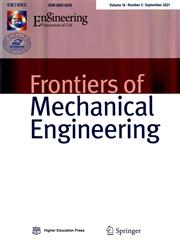基于燃烧器的热管理方法在配备CDA的发动机排气燃烧器技术中的应用
IF 4
2区 工程技术
Q1 ENGINEERING, MECHANICAL
引用次数: 0
摘要
商用车需要快速的后处理加热,将SCR催化剂移动到最有效的温度范围,以满足即将到来的氮氧化物法规,同时最大限度地减少二氧化碳。解决这个问题的一个办法是在传统的重型柴油后处理系统的上游增加一个燃料燃烧器。本文的重点是优化一种基于燃烧器的热管理方法。目标包括符合CARB 2027年道路重型柴油发动机低氮氧化物排放标准。这是通过将燃烧器系统与发动机上的气缸停用和/或点火SCR子系统配对来实现的。一种系统解决方案演示了使用重型柴油发动机的老旧后处理系统,目标是通过各种级别的控制达到2027年的排放水平。控制的基础层包括停用汽缸,将排气温度提高到100°C以上,同时提高怠速,以增加通过后处理系统的质量流量。燃油燃烧器的运行、汽缸的停用和空转速度的提高(在冷启动期间)相结合,使得后处理系统在当今系统所证明的一小部分时间内加热。通过冷FTP、热FTP、低负荷循环(LLC)和美国饮料循环对性能进行了量化。在这些循环过程中,氮氧化物减少和二氧化碳节约的改善得到了强调。本文章由计算机程序翻译,如有差异,请以英文原文为准。
Burner based thermal management approach utilizing in-exhaust burner technology with a CDA equipped engine
Commercial vehicles require fast aftertreatment heat-up to move the SCR catalyst into the most efficient temperature range to meet upcoming NOX regulations while minimizing CO2. One solution to this challenge is to add a fuel burner upstream of the con`ventional heavy-duty diesel aftertreatment system. The focus of this paper is to optimize a burner based thermal management approach. The objective included complying with CARB’s 2027 low NOX emissions standards for on-road heavy duty diesel engines. This was accomplished by pairing the burner system with cylinder de-activation on the engine and/or a light-off SCR sub-system. A system solution is demonstrated using a heavy-duty diesel engine with an aged aftertreatment system targeted for 2027 emission levels using various levels of controls. The baseline layer of controls includes cylinder deactivation to raise the exhaust temperature more than 100°C in combination with elevated idle speed to increase the mass flowrate through the aftertreatment system. The combination of operating the fuel burner, cylinder deactivation and elevated idle speed (during cold start) allows the aftertreatment system to heat up in a small fraction of the time demonstrated by today’s systems. Performance was quantified over the cold FTP, hot FTP, low load cycle (LLC) and the U.S. beverage cycle. The improvement in NOX reduction and the CO2 savings over these cycles are highlighted.
求助全文
通过发布文献求助,成功后即可免费获取论文全文。
去求助
来源期刊

Frontiers of Mechanical Engineering
Engineering-Mechanical Engineering
CiteScore
7.20
自引率
6.70%
发文量
731
期刊介绍:
Frontiers of Mechanical Engineering is an international peer-reviewed academic journal sponsored by the Ministry of Education of China. The journal seeks to provide a forum for a broad blend of high-quality academic papers in order to promote rapid communication and exchange between researchers, scientists, and engineers in the field of mechanical engineering. The journal publishes original research articles, review articles and feature articles.
 求助内容:
求助内容: 应助结果提醒方式:
应助结果提醒方式:


